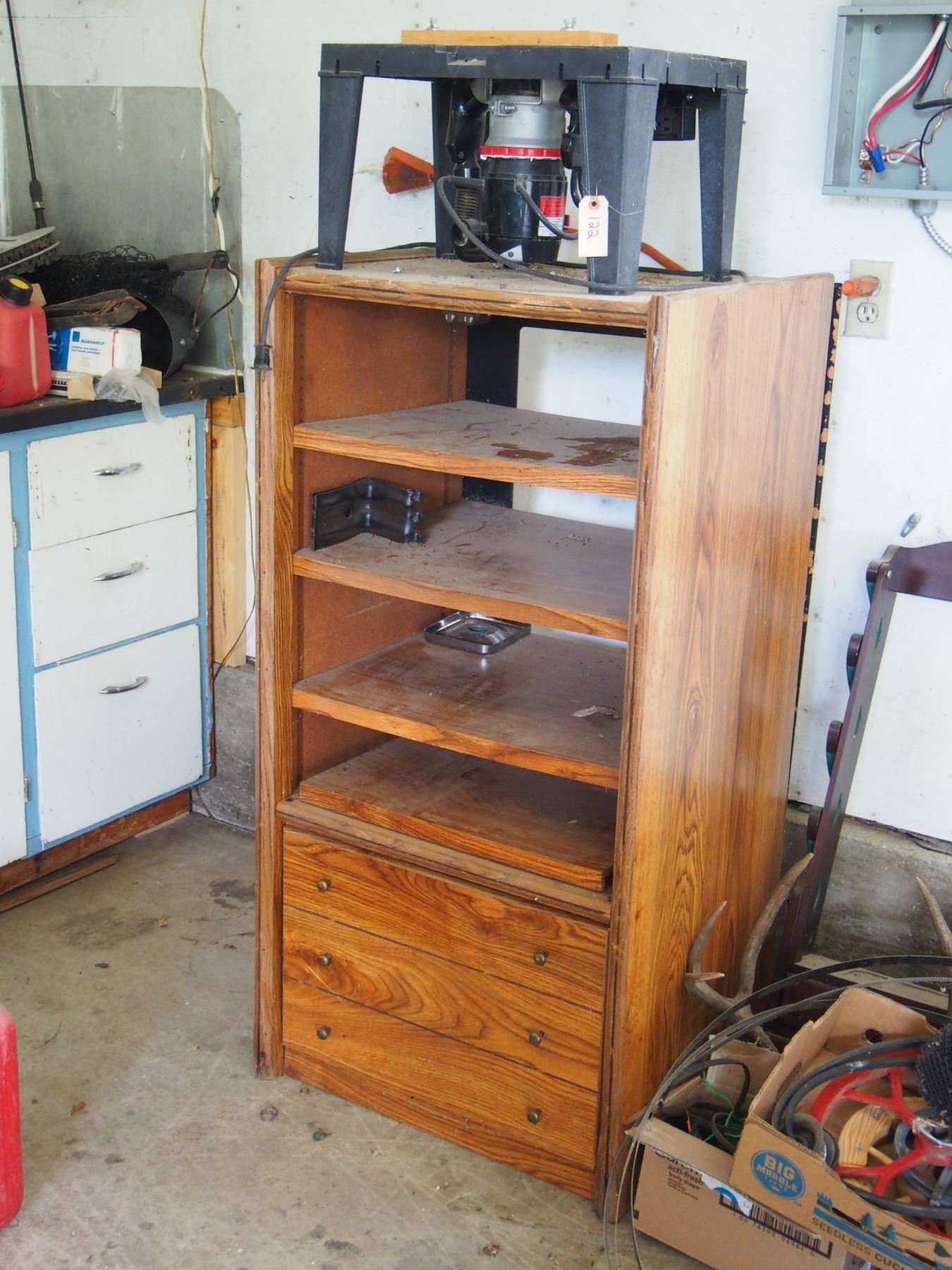
What You Should Know About Router Cutters or Bits The motor is turned on and the bit is slowly rocked into the stock to continue the routing. One can also plunge-cut or rout through the middle a work piece with a fixed base unit by placing the base or sole plate at an angle on top of the stock with the cutting bit above the stock. With the fixed-base router, the cut depth is set first before the motor is turned on, while one side of the base plate is rested flat on the stock overhanging the edge so that the cutter does not contact the stock until the motor is turned on and the cutter is slowly guided through the edge. That is why it’s called a plunge-base router because the base can be set flat on the work surface with the cutter plunging into the work when it’s lowered. The base of the tool sits flat on the face of the stock being routed, the router is switched on, and the fast spinning bit is lowered into the stock.

With the plunge-base router, you don’t need to set the cut depth before turning on the router. But these are all under the two main types which are plunge and fixed base. However there’re also other styles named according to the features each of them has.įor instance, there’re variable speed, laminate trimmers and cnc routers as well. The two main types are fixed-base router and plunge-base router. The router tool has a single basic form of a motor spinning a cutting bit, but it comes in two main types which allow the users more control over the tool. Mounting the router on a table also adds more stability to the tool allowing you to carry out more detailed work with it. With it attached to the table, you don’t handle the tool anymore.Īll you have to do is guide your work piece or stock through the fast spinning bit protruding through a hole in the table. It’s a hand tool, but it can also be attached to a table known as a router table. That means if you’re a woodworker, you’re going to find many uses for it when carrying out your projects.

Its main use is to rout or hollow out hard materials like wood or plastic. Well, a router tool is simply a motor designed to spin a bit at an extremely high speed. Router Tool Uses Every Woodworker Should know.What You Should Know About Router Cutters or Bits.If you’ve lost yours, you can also use an open-end or adjustable wrench. Adjustable wrenches can get the job done as well, but a bit harder to work with if you are trying to change a blade without removing the plunge base from the motor housing first. Locate the wrench that comes with the router. Your plunge router should have come with an open-end wrench. They’re usually packaged separately and not connected to the router as you see on other power tools. Only use bits designed for plunge routers.
#CRAFTSMAN ROUTER HOW TO#
If you have the manual that came with your plunge router, it is a good idea to read it. Not only will it tell you how to replace the router bit, but it will give you details that are specific to your router, like where to find the spindle lock and what size router bits work with your router. The carbide blades on the router bit are sharp and it can be pretty easy to cut yourself when inserting or removing the bit into the collet. Gloves are not required but may prevent cuts. Step 1: Safety FirstĬheck to make sure the router is turned off and is unplugged, or remove the battery on the router. Do not attempt to change a router bit while the router is plugged in or has a battery inserted. The good news is that learning to change a router bit is pretty easy and you can get back to work quickly. Dull router bits can burn the wood or cause kickback, damaging the material, or worse yet, injuring you.

Sometimes we are so busy producing that we forget that changing our router bits at the right time will actually help us produce more and leave you with a better product. The router is one of the most versatile tools in the shop and if you’re new to woodworking you may not know how to change a router bit.


 0 kommentar(er)
0 kommentar(er)
